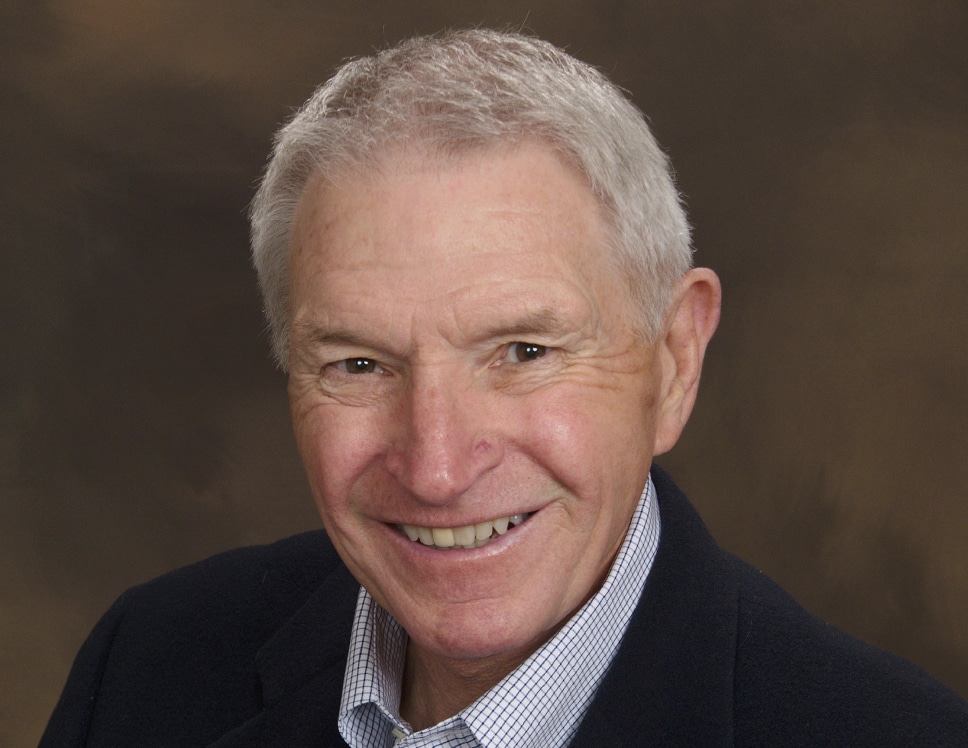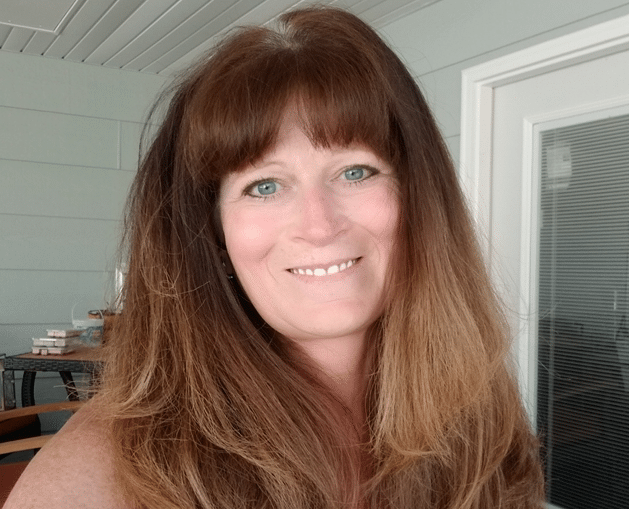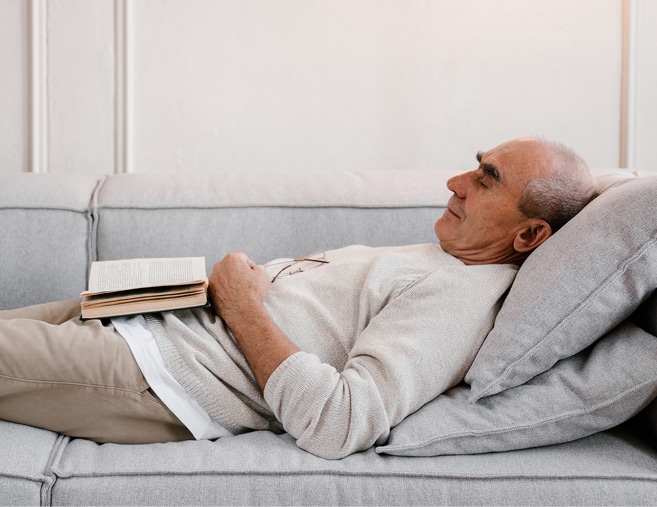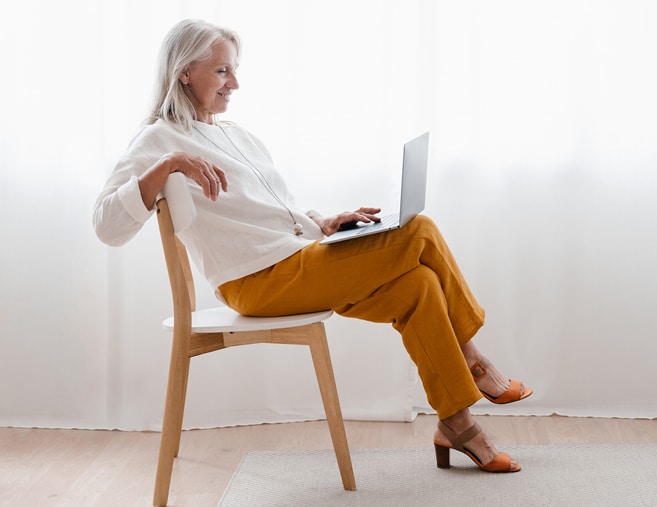Introduction
Seamus J., ZOLL: Thanks for joining us, Mr. Bender. Before we get started talking about your experience with Central Sleep Apnea, can you tell me a little bit about yourself?
Ray Bender, remedē patient: Sure. To start off, I am married and have two daughters and four grandkids – three of them are girls. I’m 75 and I have had three careers. I spent 36 years in the Army, though not all of them in active duty. I was a helicopter pilot and did two tours in Vietnam. When I finished active duty, I went to work in sales for Xerox and IBM. Then I got a PhD in management and began doing executive education. I wrote two books with my wife, Peg, about corporate culture. I also taught MBA students at Texas State University in San Marcos, TX. I did that for about six years.


I have a twin brother. We joined the reserves together in Albuquerque when we were 16. I did my first active-duty stint, which was 6 months of training, while I was still in school in 1962-1963. I then went back to college—I was going to a military school in Oklahoma on a football scholarship—for a year and a half. After that I transferred to Tulsa University, followed by Officer Candidate School with the Reserves before applying to go back on active duty. I went on active duty in ‘66, flight school in ’67, Vietnam ‘67-68 and again in ‘71-72, [inaudible], and civilian reserves and National Guard until ’97.
Living with central sleep apnea
Seamus: Thanks Ray. It sounds like you’ve been busy and have a lot of diversity in your experience. Transitioning to your experience with Central Sleep Apnea, can you tell me a little bit about how you were feeling prior to being diagnosed?
Ray: From my army skills, I had the ability to sleep anywhere, anytime. But, my wife Peg is a minor insomniac, and so she would lie awake and hear me stop breathing. She would time my apneas. I went and did a sleep study here at Scripps in San Diego. This was before the remedē device was on the open market. They diagnosed me with obstructive sleep apnea and tried to give me a CPAP mask. One good thing is that they couldn’t sync my breathing with the mask, so they didn’t force me to get one.
“My wife Peg…would lie awake and hear me stop breathing. She would time my apneas.”
The symptoms I had came on gradually, so I didn’t realize how much of a problem it was. Peg and I like to watch these BBC stories, and I would fall asleep and miss most of them. We would rewatch them, them, often three or four times before I was able to get through them.
“The symptoms I had came on gradually, so I didn’t realize how much of a problem it was. [My wife] and I like to watch these BBC stories, and I would fall asleep and miss most of them. We would rewatch them, often three or four times before I was able to get through them.”
Exploring treatment options for central sleep apnea
Ray: Peg had worked most of her life in healthcare as a consultant, and so she was always doing research. She found out about the remedē device for Central Sleep Apnea. A lot of people don’t know about [CSA]… that it’s a different type of sleep problem. When Peg found out about this, she got us an appointment with Dr. Grbach at USC. [Dr. Grbach is a sleep specialist with experience treating patients with the remedē System at the Keck Hospital of USC].
When we saw Dr. Grbach, he told me I was having 53 breathing stoppages per hour and clarified that I had central sleep apnea (not obstructive). They recommended the remedē therapy and we scheduled the surgery with Dr. Doshi, the electrophysiologist, to do the implant.
Getting the remedē System for central sleep apnea
Seamus: Did you have any reservations about getting the therapy?
Ray: I really didn’t, because by that time I’d had three pacemakers. The first one was your basic pacemaker. The next one they put in was a bi-ventricular device because they needed to pace more of my heart. Then they went back several years ago and put in one with a defibrillator. If I hadn’t had a pacemaker and done some thorough research, I might have been concerned about the procedure. But I watched the remedē video and talked to my electrophysiologist… and so like I said, no major reservations.
Seamus: How was the healing process after the procedure?
Ray: I’m trying to remember. I think they said not to lift weights or play golf for four to six weeks. It wasn’t very painful. I healed fairly quickly – minimal pain.
Seamus: Did you have to get a lot of adjustments to customize the therapy to your breathing?
Ray: After activating the device, I think I’ve been back there two more times to have them adjust it. Each time I describe to them what I’m feeling. They’ve used that information to get it adjusted really well. Before the adjustments, I would sometimes feel a stronger jolt when lying in certain positions, but they were able to adjust the settings to make it feel very natural.
Living (and sleeping) with treated central sleep apnea
Seamus: Now that you’ve had remedē for a while, how are you sleeping and feeling?
Ray: The most noticeable for me is that I rarely fall asleep during the day like I used to. That was an amazing difference. Like I said, I used to fall asleep when reading the paper or watching TV shows at night. Peg used to say I seemed like I was “vanishing”. She says I’m more awake and more present now. She used to worry that she would wake up and I wouldn’t be breathing any more – this device has really put her mind at rest.
My golfing friend says I’ve become a better golfer, so he says he wants one too!
[Before getting remedē]
“Peg used to say I seemed like I was “vanishing”. She says I’m more awake and more present now. She used to worry that she would wake up and I wouldn’t be breathing any more – this device has really put her mind at rest.”
Seamus: What tips or tricks have you learned in using the remedē System?
Ray: The key I think is trying to be asleep when it comes on at night, because its pattern of breathing and my pattern of breathing may be different. I sync my breathing to the device, but I find it happens naturally if I am already asleep when it comes on.
Seamus: Thanks Ray. I’m sure other patients will appreciate those tips, as well as hearing the rest of your story. We are glad you are sleeping and feeling better, and we appreciate you sharing with us today.




